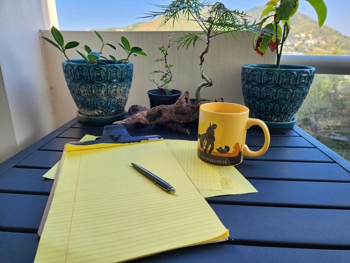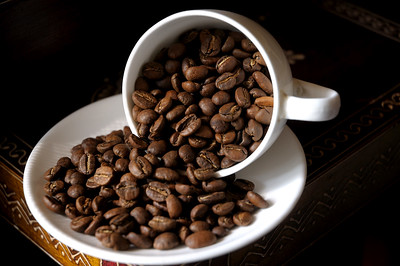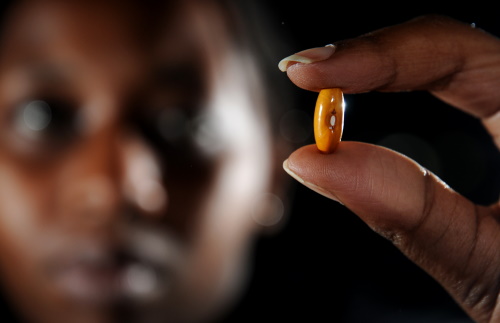As a followup on ‘Beyond Colonialism’ and a prelude to a few other things to come, we segue into the history of 3 beans: The Coffee bean, the Cocoa Bean, and the Enola Bean. Two, everyone uses daily and is quite familiar with.
We’ll start with coffee, with an overview.
Coffee’s roots started in Ethiopia. There’s a legend that a goatherd by the name of Kaldi found his goats acting funny and decided to try the beans that they were eating, somewhere around 850CE, or AD, whichever makes you happy. From there, it made it’s way to across the Red Sea to Southern Arabia (modern Yemen), purportedly by Sufi Imam Muhammad Ibn Said Al Dhabhani sometime in the 15th century.
Coffee was first exported out of Ethiopia to Yemen by Somali merchants from Somaliland (now a part of Somalia), which was procured from Harar (Eastern Ethiopia) and the Abyssinian interior. In Yemen, coffee became popular with Sufis for their praying, and the Mamluk Sulphate got the bean and it spread to Mocha (a port on Yemen’s Red Sea Coast). Note: nothing to do with chocolate.
In 1511, it was forbidden until 1524, when Ottoman Turkish Sultan Suleiman I overturned it. Coffee houses sprouted up in Cairo and Syria, and in 1532 a similar ban showed up in Cairo.
Meanwhile, it had spread to the Ottoman Empire and the Safavid Empire, and through the Battle of Mohács between the Kingdom of Hungary and the Ottoman Empire. Hungary lost and in 1529, the Siege of Vienna had the same Turks take coffee to Vienna. In the 16th century, coffee made it to Malta by way of slavery: The Ottomans tried to take Malta in the Great Siege of Malta, some were enslaved by the Knights Hospitaller, and they brewed their traditional coffee while there for money. Coffee shops opened.
The Republic of Venice, a thriving port trading with North Africa, Egypt and the East, moved coffee and it became a drink for the upper class there, with a coffee shop opening in 1645 while making it’s way to Europe.
Meanwhile, the Dutch got some hands on some plants in the 1600s and in their colonies began growing – and within the next century, almost all of Europe were using colonies to grow coffee.
The history of the coffee bean involves battles between empires, slavery and sneaking around with coffee beans in the hope they would grow somewhere else. The slaves procured and sometimes prepared, the upper class drank coffee.
Now you, gentle soul, can drink coffee like a Sultan a millennia later.
The cocoa bean’s use in human society dates back to 1,000 BC as far as we know. Whether the Olmec or Maya first used it is a question since our history of that time is limited – but we do know that the Spanish initially found no interest from the palate of Columbus, where he was gifted some by an Aztec chief in 1502, and who had some cacahuatl prepared from the beans. He did not like it, and so the Spanish Court didn’t hear much about it until after Hernan Cortes showed up in 1519. In the interim, the bloody Spanish colonization of the Americas was already underway in looking for gold, with the Mayans maybe drawing first blood in 1511 when the Spanish aboard a wrecked caravel were sacrificed by a Mayan chief, where 2 of the crew escaped.
In 1521, the Fall of Tenochtitlan took place, aided by smallpox and technology, and was a decisive event for Spain’s colonization of the Americas. Of course, history tends to forget that areas like Cempoala were vassal states of the Aztec who weren’t too pleased with having to send so much tribute to Tenochtitlan because of the human sacrifices, and so the Spaniards allied with such groups to overthrow the Aztec. There was empire before European empire, and the fragility of that empire was exploited well by Europe. This would not be the last time a European nation would do this, but it was quite likely the first time outside of Europe.
Cortes found value in the cocoa drink over time because colonization is a thirsty business. When he did make it back to Spain in 1544, he explained how the beans were used as currency, how to prepare the drink, and cocoa’s military significance: “One beaker keeps a soldier fresh for the whole day.”
That same year Mayan nobles showed up in Spain – I’m not sure if they were with Cortes or not, but I suspect that they were given sailing times back then – and they brought with them cocoa beans. In 1585, the first commercial importation of cocoa beans arrived in Spain where it became a popular drink, enough so that in 1591 there was some religious question as to whether imbibing it during Lent was allowed. The Jesuits, who were involved in the trade, took the position that drinking hot chocolate during the Lenten Fast was fine. The Dominican Order, or ‘Black Friars’, disagreed – and so this went to the Pope Gregory XIII who said it was fine to partake of the drink during the Lenten period.
The commerce of the cocoa bean thus got the Pope’s blessing, and sugar, another plantation crop of the colonies, was added to counter the bitterness of the cocoa. It made it’s way around Europe, and when the Industrial era hit, Europe’s interest in cocoa caused innovation for mass consumption which has evolved to the present day. Cocoa itself is not grown in Europe, and yet, Europe built a massive industry around cocoa and sugar, born on the backs of those subjugated from as far away as Africa (slavery) and later India (indentured labor) until slaves were freed and the indentured laborers had run their terms and could not get enough space to get back to India.
And this is why you can drink chocolate drinks, or eat chocolate, all over the world now, manufactured far from where the cocoa is grown.
In 1999, the enola bean was patented, with the only distinguishing feature of the Mexican yellow bean being it’s particular shade of yellow. This was something I followed with great interest at the time because it seemed so ridiculous, and was a great example of biopiracy – something that could be said of the two other beans above, coffee and cocoa, though they had the misfortune of not being appropriated in modern times.
The owner of the patent actually sued anyone who was importing the bean that matched the shade of yellow in their patent, causing a massive decrease in importation from Mexico, impacting around 22,000 Mexican farmers. This was all over the color of the bean, not something as original as coffee or cocoa which were in and of themselves original and exploited. It was a manufactured exploit, one which natural selection and natural pollination would create independently.
The bean itself is not that interesting. Why did I add it in here? The reason I did was because laws were exploited rather than offerings of smallpox, swords and muskets. In the modern age, this is how the laws of nations can be exploited. Fortunately, in 2005 the United States Patent Office ruled in favor of the Mexican farmers and in 2008 they threw out the patent on the Enola Bean.
Such cases, such as like with the neem, caused India to create a database of traditional knowledge to protect knowledge of India from others – an exercise in sovereignty that not many nations have done or could do given their shorter histories of written works.
The Convention of Biodiversity, (CBD) established in 1993, has been criticized for not doing enough – and, of interest, 196 nations have ratified, acceded or accepted the CBD. The Holy See and the United States, noteworthy because of Enola Bean for the latter, have not.
Beans. These are just three beans that show exploitative history. Three beans we take for granted in the modern world.
Go into the kitchen and find something you use every day. I’m sure you can find an interesting history.








